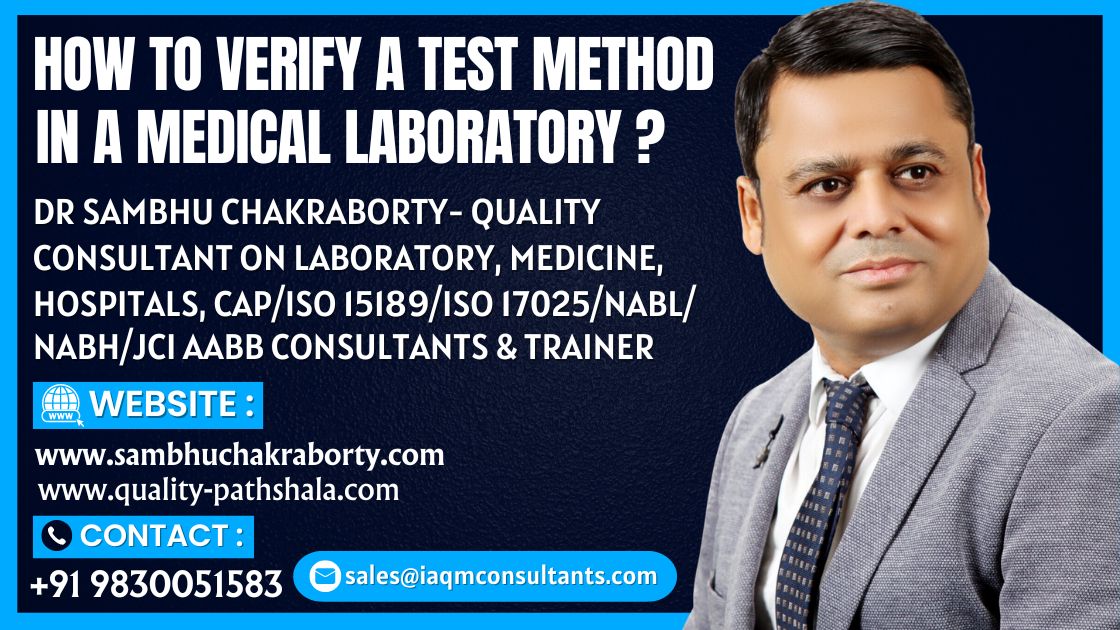Verifying a test method in a medical laboratory is a crucial process to ensure that the method is reliable, accurate, and produces consistent results. Here are the steps to verify a test method:
- Understand the Test Method: Thoroughly review the test method’s documentation, including the manufacturer’s instructions, standard operating procedures (SOPs), and any relevant guidelines or protocols. Understand the principle of the method, the intended use, and the specific requirements for sample handling and analysis.
- Select Verification Samples: Choose a set of verification samples that represent the full range of expected test results and cover the different conditions the method may encounter. These samples should be well-characterized and traceable to a reference method or standard.
- Prepare Verification Samples: Ensure that the verification samples are stable and properly stored. If necessary, dilute or spike samples to cover the desired concentration range.
- Perform Replicate Testing: Run multiple replicates of each verification sample using the test method. The number of replicates should be based on statistical considerations to ensure confidence in the results.
- Analyse Data: Collect and analyse the data from the replicates. Calculate the mean, standard deviation, and coefficient of variation (CV) for each verification sample. Compare the results to establish precision and consistency.
- Compare to Reference Method: If available, compare the results obtained from the test method with those from a well-established reference method. If there is no reference method, consider performing an external proficiency testing program to compare the results with other laboratories.
- Analyse Interference: Evaluate the method for potential interference from substances commonly found in patient samples. For example, consider the effect of homolysis, lipemia, or bilirubin on the test results.
- Assess Linearity and Range: Verify that the test method is linear and can accurately measure samples across the expected measurement range. This may involve testing samples with varying concentrations or diluting samples to extend the range.
- Establish Decision Limits: Define decision limits for the test based on clinical significance and the medical requirements of the laboratory. Decision limits help in the interpretation of test results and aid in clinical decision-making.
- Verify Analytical Sensitivity and Specificity: Evaluate the analytical sensitivity (limit of detection) and specificity of the test method to ensure it can detect low concentrations accurately and is not influenced by interfering substances.
- Document the Verification Process: Thoroughly document the verification process, including the testing protocol, data analysis, and conclusions. The documentation should be accessible for review and auditing purposes.
- Training and Competency: Ensure that all laboratory personnel involved in performing the test method are adequately trained and competent in following the validated procedure.
verification is a critical step before implementing a new test method or making changes to existing methods in a medical laboratory. It provides confidence in the accuracy and reliability of the method and ensures that patients receive reliable and clinically relevant test results.
About the author
Dr. Sambhu Chakraborty is a distinguished consultant in quality accreditation for laboratories and hospitals. With a leadership portfolio that includes directorial roles in two laboratory organizations and a consulting firm, as well as chairmanship in a prominent laboratory organization, Dr. Chakraborty is a respected voice in the field. For further engagement or inquiries, Dr. Chakraborty can be contacted through email at director@iaqmconsultants.com and info@sambhuchakraborty.com. Additional resourcesand contact information are available on his websites, https://www.quality-pathshala.com and https://www.sambhuchakraborty.com, or via WhatsApp at +919830051583

Great blog!
What’s a spike sample?
How can we concentrate a sample to extend measurement range?
Thanks